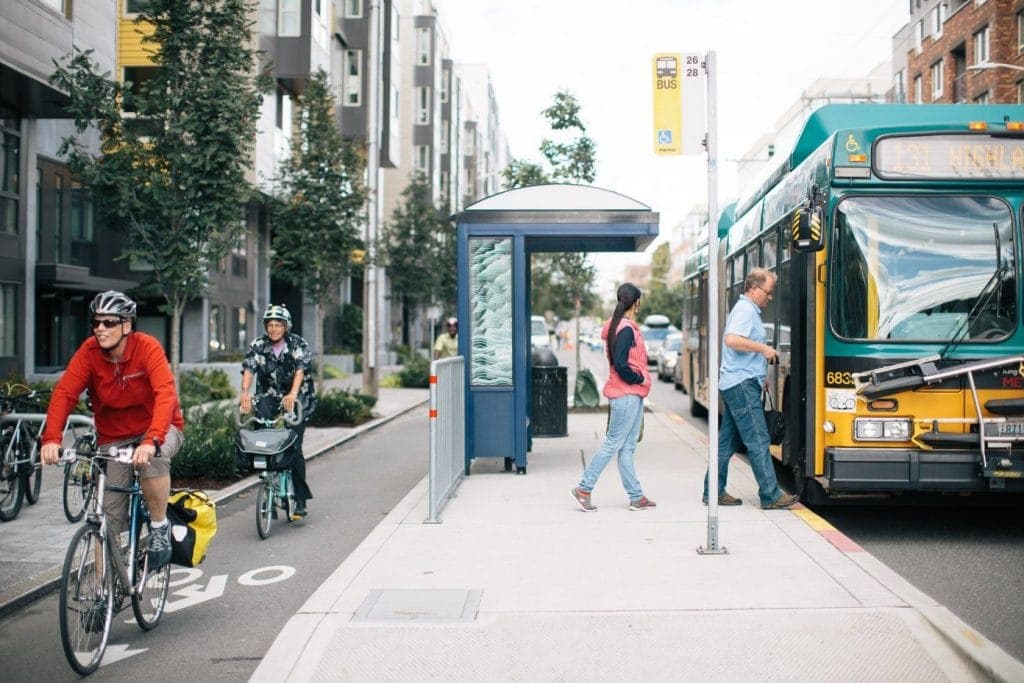
Resource
Complete Streets Policy Framework
Complete Streets Policy Framework
The Complete Streets Policy Framework (substantially revised in 2018 and refreshed/repackaged in 2023) represents the current best practices for creating a strong policy that can be implemented at any level of governance. It’s the go-to policy framework to guide any community that wants to develop its own policy.
The National Complete Streets Coalition (NCSC) identifies the elements of a comprehensive Complete Streets policy to help communities develop and implement policies and practices that ensure streets are safe for people of all ages and abilities, balance the needs of different modes, and support local land uses, economies, cultures, and natural environments.
These 10 policy elements are based on decades of collective expertise in transportation planning and design, and created in consultation with NCSC’s steering committee members and a group of national stakeholders consisting of engineers, planners, researchers, and advocates.
(Note: You can also read a 2023 introduction to the refreshed framework.)
An ideal Complete Streets policy includes the following:- Establishes commitment and vision:
How and why does the community want to complete its streets? This specifies a clear statement of intent to create a complete, connected network and consider the needs of all users. - Prioritizes underinvested and underserved communities:
Requires jurisdictions to define who are their most underinvested and underserved communities and prioritize them throughout. - Applies to all projects and phases:
Instead of a limited set of projects, it applies to all new projects, retrofit or reconstruction projects, maintenance projects, and ongoing operations. - Allows only clear exceptions:
Any exceptions must be specific, with a clear procedure that requires high-level approval and public notice prior to exceptions being granted. - Mandates coordination
Requires private developers to comply, and interagency coordination between government departments and partner agencies. - Adopts excellent design guidance
Directs agencies to use the latest and best design criteria and guidelines, and sets a time frame for implementing this guidance. - Requires proactive land-use planning
Considers every project’s greater context, as well as the surrounding community’s current and expected land-use and transportation needs. - Measures progress
Establishes specific performance measures that match the goals of the broader vision, incorporate equity considerations, and are regularly reported to the public. - Sets criteria for choosing projects
Creates or updates the criteria for choosing transportation projects so that Complete Streets projects are prioritized. - Creates a plan for implementation
A formal commitment to the Complete Streets approach is only the beginning. It must include specific steps for implementing the policy in ways that will make a measurable impact on what gets built and where.

© 2025 Smart Growth America. All rights reserved
Site By3Lane Marketing











